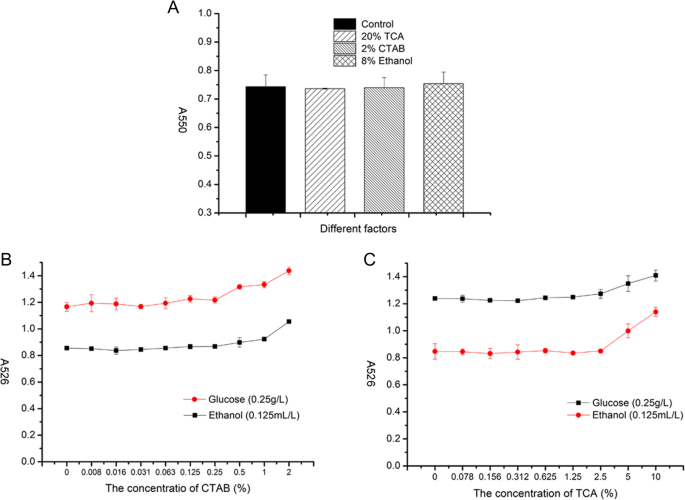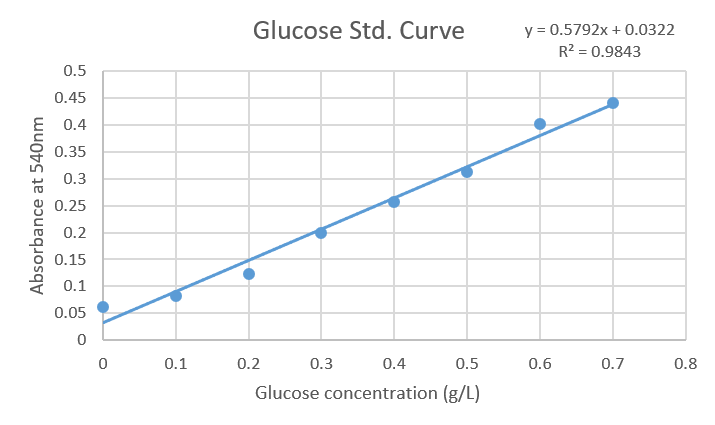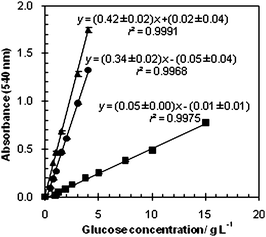A glucose standard curve is a graphical representation of the relationship between the concentration of glucose in a solution and the absorbance of light at a specific wavelength. The DNS (3,5-dinitrosalicylic acid) method is a common technique used to measure the concentration of glucose in a solution.
To create a glucose standard curve using the DNS method, a series of glucose solutions with known concentrations are prepared. These solutions are then incubated with a reagent called DNS, which reacts with the glucose to form a colored compound. The absorbance of this colored compound is then measured using a spectrophotometer at a specific wavelength, typically around 540 nm.
The absorbance of the colored compound is directly proportional to the concentration of glucose in the solution. Therefore, by plotting the absorbance values of the glucose solutions on the y-axis and the concentrations of the solutions on the x-axis, a standard curve can be generated.
The standard curve can then be used to determine the concentration of glucose in an unknown sample by measuring the absorbance of the sample and comparing it to the curve. By interpolating the absorbance value on the curve, the concentration of glucose in the unknown sample can be determined.
The DNS method is a simple and reliable method for measuring the concentration of glucose in a solution. It is widely used in research and clinical settings to accurately determine the concentration of glucose in samples such as blood, urine, and tissue culture media.
In conclusion, the DNS method is a useful technique for creating a glucose standard curve, which allows for the accurate determination of the concentration of glucose in a solution. It is a commonly used method in research and clinical settings due to its simplicity and reliability.





